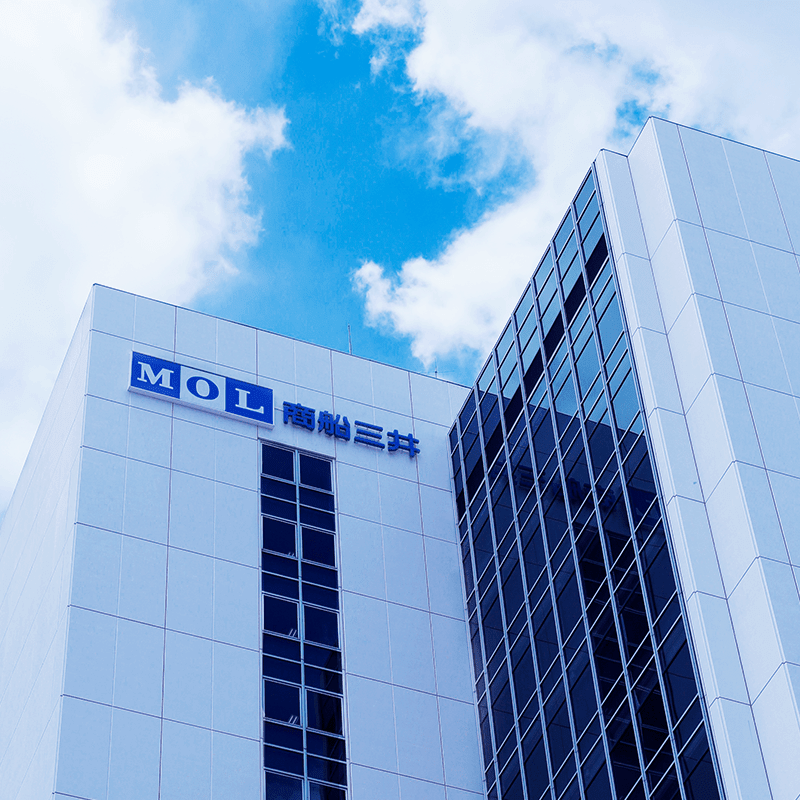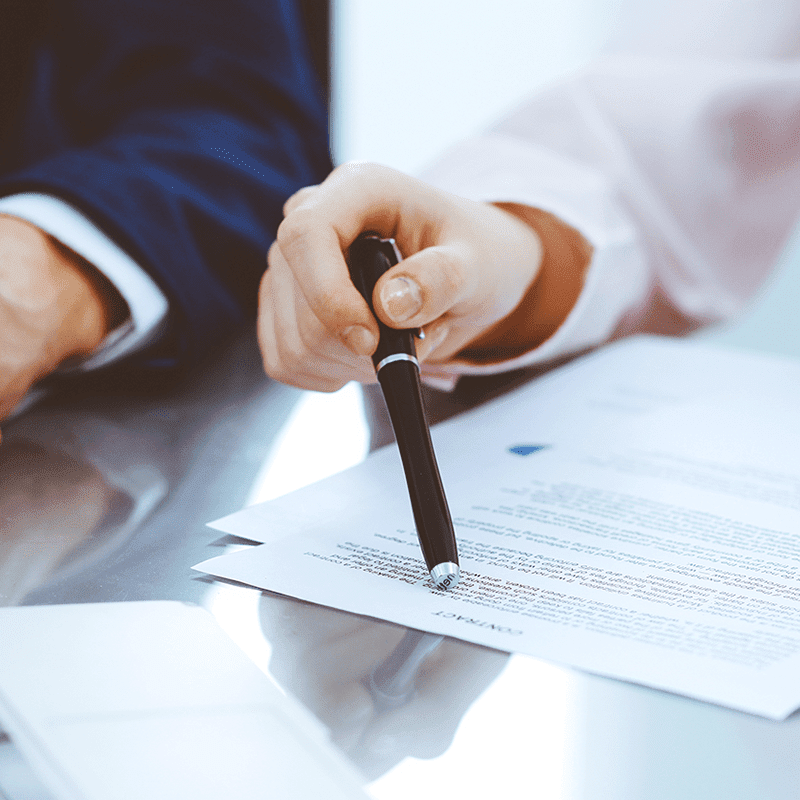BLOG
A White Egg Floating on the Sea — The Birth of Hydrogen Passenger Vessel “HANARIA”
- Eco Friendly
- General Shipping
2025.09.16
In March 2024, a groundbreaking vessel emerged from the waters of the Kanmon Strait: ‘HANARIA’, Japan’s first hydrogen-powered passenger ship.
Emitting zero greenhouse gases and operating with remarkable quietness and elegance, HANARIA has quickly become a symbol of a decarbonized future.
With its exceptional ride comfort, cruising performance, safety, and forward-looking potential, HANARIA is redefining what we thought we knew about maritime travel.
Its journey from development to operation was filled with challenges and breakthroughs. This article dives into the vision and technology behind HANARIA’s creation. And at the end, we will share a firsthand account of what it is like to actually board HANARIA. Don’t miss it!

Photography (From the official HANARIA website)
Key Points
- Japan’s first hydrogen-powered passenger vessel, HANARIA, debuts in the Kanmon Strait
- A futuristic cruise experience with silent operation and zero emissions
- A hybrid electric vessel equipped with three power sources, balancing safety and sustainability
- Its unique “white egg” design stands out beautifully against the sea
- A groundbreaking vessel awarded both “Ship of the Year” and “Marine Engineering of the Year,” symbolizing the shift toward a decarbonized society
Realizing a Decarbonized Society Through Hydrogen
For this feature, we spoke with four key members from the Hydrogen Business Design Department at MOL Techno-Trade, Ltd., who were deeply involved in the construction and launch of HANARIA:
• Masahiro Yamakawa, General Manager
• Shigeki Kyoda, Associate General Manager
• Atsushi Mukaiyama, Assistant General Manager
• Takehiro Kaneko, Senior Assistant
With a long-term vision of expanding into the renewable energy sector, MOL Techno-Trade, Ltd. has been exploring new maritime solutions powered by hydrogen. HANARIA was conceived as the first step in this bold initiative.
Mukaiyama
Hydrogen is a colorless, odorless, and non-toxic gas that offers higher safety and significantly lower environmental impact compared to fuels such as ammonia or methanol. While liquefied hydrogen requires strict temperature control and is difficult to handle, hydrogen gas is much more manageable—even for crew members on domestic vessels. We chose hydrogen for its overall practicality.
Eventually, the project was selected for the Nippon Foundation’s “Zero Emission Ship Project”, which paved the way for full-scale construction.
Since there were no established models for hydrogen-fueled vessels at the time, they had to pioneer new approaches both technologically and institutionally. Still, believing in the vast potential ahead, MOL Techno-Trade, Ltd. took a bold first step forward.

Photography (From the official HANARIA website)
Power Management That Balances Safety and Sustainability with Three Power Sources
HANARIA is a hybrid electric vessel equipped with three types of power sources: hydrogen fuel cells, lithium-ion batteries, and a biodiesel generator. At the heart of its operation is a power management system that allows flexible switching between these sources. This system enables operators to select any of the three power sources via a touchscreen interface and automatically adjusts the load distribution based on the vessel’s power demands. It works in coordination with newly developed power generation and propulsion equipment.
This vessel marks the first-ever deployment of a marine hydrogen fuel cell system developed by YANMAR POWER TECHNOLOGY CO., LTD.
HANARIA can operate in a “zero-emission mode” using only hydrogen fuel cells and lithium-ion batteries, or in a “hybrid mode” that combines these with the biodiesel generator. The lithium-ion batteries can be charged not only from the hydrogen fuel cells and biodiesel generator but also from onshore power supply facilities.
Moreover, HANARIA is the first vessel to comply with the Ministry of Land, Infrastructure, Transport and Tourism (MLIT)’s safety guidelines for hydrogen fuel cell ships.
 Hydrogen Tanks(On-site Photography)
Hydrogen Tanks(On-site Photography)
Mukaiyama
Compared to conventional vessels powered by diesel fuel, operating HANARIA with all three power sources can reduce greenhouse gas emissions by 53%. In zero-emission mode, as the name suggests, emissions are reduced by 100%, and the vessel can operate for up to five to six hours.
However, relying solely on hydrogen and batteries raised concerns for commercial operations. Hydrogen fuel cells still have limited track records, and the supply infrastructure presents challenges. To address these uncertainties, we incorporated a biodiesel generator — a proven technology — as a third power source. For stable commercial operation, redundancy was absolutely essential.
Exploring New Forms of Hydrogen Supply — Operational Challenges Ahead
HANARIA incorporates a newly developed large-scale portable hydrogen tank module designed specifically for maritime use, based on the technology used in Toyota’s hydrogen fuel cell vehicle, MIRAI. The vessel is equipped with eight detachable modules, each comprising two tanks — marking the first attempt of its kind for a commercial ship in Japan. These tanks are not only easy to load and unload, but they also meet high durability standards — capable of withstanding risks such as drops, collisions, and even impact damage.
Kyoda
While the MIRAI fuel cell vehicle carries about 5 kilograms of hydrogen, HANARIA requires approximately 150 kilograms. Because of this vast difference in capacity, we couldn’t simply reuse MIRAI’s tank technology. We had to develop new components such as pressure regulators, relief valves, and a monitoring system to accommodate the larger scale.
Mukaiyama
This kind of cross-industry collaboration is quite rare. To make hydrogen tanks viable for maritime use, we worked closely with multiple companies to bring the system to life.
3.jpg?width=2880&height=2160&name=%E5%94%90%E6%88%B8(%E6%A8%AA)3.jpg)
(On-site Photography)
At HANARIA, hydrogen is filled into dedicated tanks at a land-based hydrogen station and transported to the vessel via a truck equipped with a crane. Once onboard, the hydrogen is used as fuel for operations. This system complies with a wide range of regulations, including the High Pressure Gas Safety Act, Fire Service Act, and the Ship Safety Act, covering both land and maritime domains.
From the design phase onward, the project was developed under the guidance of MLIT and the National Maritime Research Institute, incorporating risk simulations and various validations to ensure safety.
Yamakawa
One of the advantages of HANARIA’s hydrogen supply system is that it doesn’t rely on fixed port infrastructure. Instead, it flexibly utilizes land-based hydrogen supply facilities. However, the number of usable hydrogen stations is still limited. Of the approximately 150 stations nationwide, only a handful are currently capable of refueling anything other than automobiles.
We are working closely with the Ministry of Economy, Trade and Industry and the Cabinet Office to expand the number of compatible stations, but challenges remain.

(On-site Photography)
A White Egg Floating on the Sea — Futuristic Design and Comfort
One of HANARIA’s most captivating features is its innovative design. The hull is based on a streamlined trimaran structure, while the superstructure forms a smooth, rounded silhouette—resembling a white egg floating on the sea.
Mukaiyama
When creating an entirely new type of vessel, we wanted the design to be just as groundbreaking. That’s why we envisioned it as a “white egg floating on the sea.” I’ve heard the manufacturing team faced considerable challenges in shaping the curved surfaces of the hull.
Inside, the vessel offers a refined space with a clean white aesthetic.
It’s equipped with a 100-inch monitor, a 270-degree projection-capable system, movable seating for event configurations, and barrier-free accessibility—all thoughtfully designed to meet a wide range of passenger needs.
Kaneko
Another major advantage of HANARIA is its remarkably low noise and vibration levels compared to conventional diesel-powered vessels.
Passengers are often surprised by how quiet the ship is when operating on hydrogen.
Some have even described the experience as feeling like the vessel is standing still—despite maintaining full cruising speed.
Starting in April 2024, HANARIA began offering public cruises, operating from locations such as Karato Pier in Shimonoseki, as well as Moji Port and Kokura Port in Kitakyushu City.
Passengers can enjoy the picturesque scenery of the Kanmon area, including sights like the Kaikyokan Aquarium, Yume Tower, and the large vessels passing through the strait.
 (On-site Photography)
(On-site Photography)
Yamakawa
The vessel experiences minimal sway, and it’s quiet and comfortable.
You could place a wine glass on the table without it tipping over. Many passengers have commented on how pleasant it is to spend time on the open-air deck on the second floor, enjoying the breeze. Customer satisfaction has been extremely high. Even those who are prone to motion sickness have said they feel at ease on this ship.
One elderly passenger who uses a wheelchair even said, “It was the most enjoyable experience of my life.” Zero-emission technology is not only kind to the environment — it also has the power to enrich the human spirit.
 (On-site Photography)
(On-site Photography)
Yamakawa
HANARIA is gradually becoming a beloved presence among the local community. We’ve even heard from representatives of Kanmon DMO, a regional tourism development organization, that they hope to promote the Kanmon area’s appeal with HANARIA as a key attraction.
Our goal is for HANARIA to become one of the icons of this region.
Due to the vessel’s specifications and hydrogen supply requirements, expanding operations to other areas presents various challenges.
However, if there is sufficient demand, we would like to explore the possibility of deploying HANARIA in other regions such as Kobe, Osaka, Tokyo, and Yokohama.
Double Honors: “Ship of the Year” and “Marine Engineering of the Year”
HANARIA was awarded the prestigious title of “Ship of the Year 2024”, followed by the “Marine Engineering of the Year 2024” award. Both awards are highly respected in the maritime industry, and receiving both in the same year is an unprecedented achievement.
Mukaiyama
The “Ship of the Year” award, hosted by the Japan Society of Naval Architects and Ocean Engineers, is presented annually to vessels built in Japan that demonstrate outstanding technical, artistic, and social value. It’s essentially the maritime equivalent of a “Car of the Year.”
Although we didn’t initially aim to enter the competition, the fact that HANARIA was recognized for both its engineering and design makes this award a perfect fit.
Kaneko
We received the news of HANARIA winning “Ship of the Year” while hosting guests aboard the vessel during Bariship, a major maritime industry event. Many industry colleagues who were with us at the time offered their heartfelt congratulations.
Both the “Ship of the Year 2024” and “Marine Engineering of the Year 2024” awards were jointly presented to HANARIA and the multiple companies involved in its construction and the development of its hydrogen supply chain.
This recognition highlights the significance of the collaborative effort to build a hydrogen-powered vessel of unprecedented scale—an achievement that carries deep meaning for the realization of a decarbonized society.
 Award Ceremony Photo (Provided by MOL Techno-Trade, Ltd.)
Award Ceremony Photo (Provided by MOL Techno-Trade, Ltd.)
From right to left:
・Mr. Hideyuki Suzuki, President, Japan Society of Naval Architects and Ocean Engineers
・Mr. Yoshikazu Kawagoe, Senior Fellow, MOL Techno-Trade, Ltd.
・Mr. Masao Fukushima, President and CEO, MOL Techno-Trade, Ltd.
・Mr. Takato Udo, Executive Director, Japan Railway Construction, Transport and Technology Agency (JRTT)
・Mr. Makoto Hongawara, President, Hongawara Ship Yard Co., Ltd.
Toward the Future of Hydrogen Business — HANARIA and the Decarbonization of the Sea
The success of HANARIA is far more than a mere “technology showcase.”
It is steering us towards the next phase as a practical solution for a hydrogen-powered society.
Kyoda
Realizing zero-emission vessels plays a major role in advancing a decarbonized society and achieving carbon neutrality by 2050. Operating with hydrogen fuel cells and lithium-ion batteries not only reduces environmental impact, but also minimizes vibration and noise, while producing odorless and harmless exhaust — making the onboard environment more comfortable. This benefits not only passengers but also improves working conditions for crew members.
As part of the broader MOL Group, we’ve been exploring various next-generation fuels, and our company has focused on the potential of hydrogen. If hydrogen-powered vessels like HANARIA continue to grow in number, it will accelerate the development of hydrogen supply chains and related technologies. We aim to leverage the experience and insights gained from HANARIA to pursue new opportunities and challenges.
HANARIA truly embodies the concept of a “ship of the future.” As a symbol of decarbonization and a provider of comfortable cruise experiences, it will continue to capture the hearts of many. And perhaps one day, HANARIA’s wake will become the standard for hydrogen-powered vessels across the world’s oceans.
My Experience Aboard HANARIA!
In August 2025, I had the opportunity to board HANARIA in Shimonoseki as a member of the MOL Solutions editorial team. The cruise I experienced was the “Karato 60-Minute Cruise” (fare: ¥2,500), departing from Karato Pier. It’s a scenic route that offers views of Ganryujima Island from the water and passes beneath the Kanmon Bridge, allowing passengers to fully enjoy the beauty of the Kanmon area. When I arrived at Karato Pier, the first thing that caught my eye was HANARIA’s distinctive form.
Its smooth, rounded design—resembling a white egg—stood out brilliantly against the blue sky and sea, giving it a presence that clearly sets it apart from the other ferries in the harbor.
4.jpg?width=751&height=563&name=%E5%94%90%E6%88%B8(%E8%88%B9%E9%A6%96%E5%81%B4)4.jpg) (On-site Photography)
(On-site Photography)
As I stepped inside the vessel, the first floor revealed a spacious and elegant interior. Through the large windows, I could fully enjoy the scenic views of the Kanmon area. On the second-floor open deck, comfortable chairs were arranged, allowing me to relax and take in the cityscapes of Shimonoseki and Moji while feeling the sea breeze.
Shortly after departure, an announcement was made: “We will now begin cruising in zero-emission mode.” At that moment, the engine noise and vibrations disappeared, and the cabin became astonishingly quiet.
It felt as if the ship had come to a complete stop—yet we were still moving.
Even as someone prone to motion sickness, I found the experience incredibly comfortable. It was a truly graceful and serene cruise.
 Left:
Left:
During the cruise, I passed by many cargo ships—no surprise, given that the Kanmon Strait sees between 500 to 600 vessels daily, and nearly 1,000 on busy days.
Right:
From the second-floor deck, I had a clear view of Ganryujima Island, which the cruise nearly circled in its entirety.(On-site Photography)
 A view of the Kanmon Bridge from aboard the ship.(On-site Photography)
A view of the Kanmon Bridge from aboard the ship.(On-site Photography)
And then—just after passing directly beneath the Kanmon Bridge—I encountered something truly magical: a pod of wild dolphins, not once but twice! The captain announced, “Dolphins are visible on the right side,” and every passenger rushed to catch a glimpse. The excitement on board was electric, and this unexpected surprise turned the cruise into an unforgettable experience.
HANARIA, winner of both the “Ship of the Year 2024” and “Marine Engineering of the Year 2024”, is truly a vessel that commands attention.
After experiencing its one-of-a-kind design and astonishing quietness firsthand, I fully understood why it earned such prestigious recognition.
If you ever find yourself in the Kitakyushu area, I highly recommend boarding HANARIA. A journey aboard this future-forward vessel offers not only environmental sustainability—but also a deeply human sense of comfort and joy.

HANARIA Website

MOL Techno-Trade, Ltd.
Official Website
Recommended Articles
2022.07.05
- General Shipping
2021.04.13
- Energy
2023.12.19
- General Shipping
2021.08.07
- Eco Friendly
2025.03.18
- General Shipping
Latest Articles
2025.12.09
- Eco Friendly
- General Shipping
2025.12.03
- General Shipping
2025.11.20
- Energy
- General Shipping








